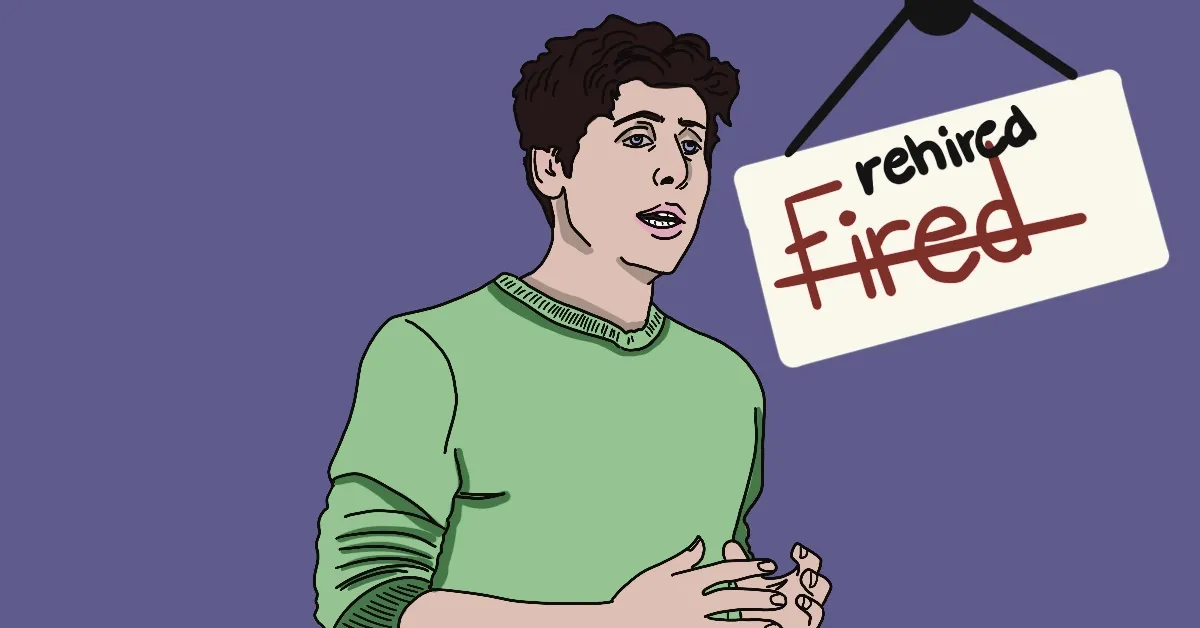Turmoil Unfolds at OpenAI: The Altman Saga
OpenAI's recent turmoil, from CEO Sam Altman's ousting to his dramatic reinstatement, unveils deep rifts and power plays in the AI world.
On Thursday, November 23, OpenAI, a leading figure in artificial intelligence, experienced a tumultuous period marked by the firing and rapid rehiring of its CEO, Sam Altman. This unexpected turn of events shocked Silicon Valley and highlighted the underlying tensions and challenges within the rapidly evolving AI industry.
Founded in December 2015 by Sam Altman, Greg Brockman, Ilya Sutskever, and other notable figures including Elon Musk and Reid Hoffman, OpenAI started as a non-profit research laboratory. Its mission was to advance digital intelligence to benefit the economy. In 2018, the company transitioned to a for-profit business, Open AI LP, and launched its first generation of the GPT language model.
On November 22, OpenAI gained widespread recognition with the release of ChatGPT. This AI model, capable of producing human-like text, images, video, and music, quickly became one of the world’s fastest-growing software applications. However, it also raised concerns about the ethical use of AI in schools and offices.
Sam Altman, a Stanford University dropout and former head of the startup accelerator company Y Combinator, became CEO of OpenAI in May 2019. Under his leadership, ChatGPT achieved global recognition, and Altman emerged as a prominent voice in AI, discussing the technology’s promise and potential risks with government officials worldwide.
The crisis at OpenAI began when the board fired Altman on November 17, due to his lack of openness when communicating with the team. This decision caught many, including minority owner, Microsoft, by surprise. Microsoft has invested approximately US$13 billion in the startup and briefly considered Altman for a role in a new AI unit. In response, Greg Brockman, co-founder and former president, announced his departure from the company, reflecting the depth of the internal conflict.
The response from OpenAI’s staff was immediate and decisive. More than 95 per cent of its employees, including high-profile figures like CTO Mira Murati and co-founder Ilya Sutskever, signed an open letter demanding Altman’s reinstatement, threatening to resign otherwise.
The situation escalated further when the UK’s Department for Science Innovation and Technology and the US White House declined to comment on the matter, underscoring the lack of regulatory oversight in the AI sector. Experts emphasized the need for greater regulation to protect consumers from internal corporate conflicts.
This internal power struggle at OpenAI raised concerns about transparency in decision-making and the development of AI technologies. There is a lack of public scrutiny over updates and quality control in AI systems, unlike in other tech sectors like smartphone software updates.
Paul Barrett, Deputy Director at NYU’s business school, called for regulations requiring AI makers to improve the safety of their products, similar to standards in the pharmaceutical industry.
Altman’s return signaled a victory for the former group. These events reflected the intense competition to be first in the AI arms race among tech giants like OpenAI, Google, and Microsoft. This leads to less caution in AI development.
Altman’s reinstatement, following intense negotiations and employee threats, marked a significant victory for Microsoft, which had worked with other investors to reverse his firing. New board members like Larry Summers and Bret Taylor were introduced, with the board’s composition being a major sticking point in the negotiations.
Behind the scenes, Altman had clashed with board members over AI development strategies and his entrepreneurial ambitions, including plans to raise funds for an AI chip startup and collaborations with significant figures in the tech industry.
OpenAI’s history marks previous Silicon Valley affairs, including the ousting and returns of leaders like Steve Jobs at Apple and Jack Dorsey at X, formerly Twitter.
The recent turmoil at OpenAI not only signifies internal power struggles but also reflects broader challenges in the AI industry. The rapid pace of AI development along with the lack of comprehensive regulation raises critical questions about the future direction and responsible governance of AI technologies.
Associate News Editor (Volume 50) — Karine is currently completing her bachelor’s degree specializing in Digital Enterprise Management at UTM. She has been involved with The Medium since 2022 as a contributor. She hopes to contribute to society's efforts to provide authentic and factual journalistic media to educate her readers during her time at The Medium. Her goal is to take her interest in ongoing research within the business and technology field and explore ways to share it with others through this platform. In her spare time, she enjoys going on walks, FaceTiming her family, and painting sunsets with her friends. Moreover, she passionately pursues the chase of the Aurora Borealis, seeking to experience and capture the breathtaking beauty of these natural light displays. You can connect with her on LinkedIn.


